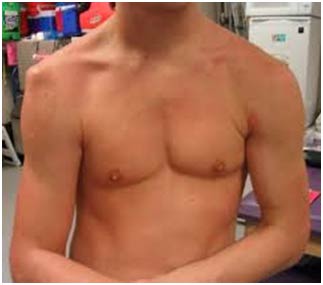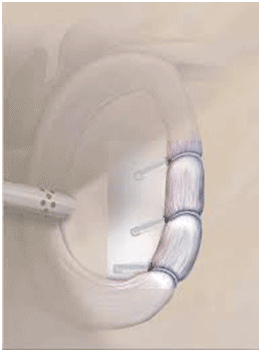Our shoulders allow us to do amazing things like throwing a baseball, doing a handstand or a cartwheel, and even simple things like waving to our family and friends. But...when our shoulder dislocates or gets out of the socket, it can be painful and limiting. This is a violent injury that almost always involves the arm being forcefully stretched, especially overhead after a fall.
Illustration showing how the shoulder can “pop” out of the front of the shoulder

Shoulder dislocation is a painful injury that occurs when the upper arm bone pops out of the shoulder socket. A person with a shoulder dislocation will likely notice severe pain, swelling, and bruising in the shoulder area. The shoulder may also appear deformed or out of place, and individuals may have difficulty moving their arm. If you suspect a shoulder dislocation, it is important to seek medical attention right away to prevent further damage and ensure proper treatment. Most of the time a shoulder dislocation requires a patient to go to the emergency room to put the shoulder back in place, but sometimes it can be popped back into place right after it happens. In this instance, a patient may still feel, even weeks later, that the shoulder is loose and wants to pop out. Sometimes a shoulder can even dislocate when a patient is sleeping.
Note how the normal contour of the shoulder on the right is lost because of an anterior (or front) dislocation.

Diagnosing a shoulder dislocation typically involves a physical examination by a healthcare provider, as well as imaging tests such as X-rays or MRI scans. These tests can help the healthcare provider determine the extent of the dislocation and assess any associated damage to the surrounding tissues. In some cases, a healthcare provider may also perform a specialized test called a shoulder arthroscopy to further evaluate the shoulder joint and repair the damaged structures.

Treatment options for a shoulder dislocation depend on the severity of the injury. In some cases, a healthcare provider may be able to manually manipulate the shoulder back into place, a procedure known as closed reduction. This is usually performed in the emergency room. Following a successful reduction, the shoulder may be immobilized in a sling for a period of time to allow the surrounding tissues to heal. Physical therapy may also be recommended to help strengthen the muscles around the shoulder joint and improve the range of motion.
In more severe cases or if the shoulder keeps dislocating, surgical intervention may be necessary to repair the damaged tissues and stabilize the joint. Surgery for a shoulder dislocation may involve a procedure to repair torn ligaments. Following surgery, physical therapy and exercises to do at home are often recommended to help individuals regain strength and function in the shoulder joint.
Illustration showing the tear in the labrum that leads to instability allowing the humerus to move out of the socket towards the front of the shoulder.


The outcomes of treatment for a shoulder dislocation can vary depending on the individual and the extent of the injury. In many cases, individuals are able to recover from a shoulder dislocation with appropriate treatment and rehabilitation. However, it is important to follow the healthcare provider's recommendations for rest, rehabilitation, and activity modification to reduce the risk of future dislocations. By seeking prompt medical attention and following a comprehensive treatment plan, individuals can improve their chances of a successful recovery from a shoulder dislocation.
Drawing of an arthroscopic labral repair. Note how the tear in the labral is repaired with anchors and sutures.

In conclusion, shoulder dislocation is a painful injury that can cause significant discomfort and limit the use of the affected arm. By recognizing the symptoms and seeking timely medical attention, individuals can receive an accurate diagnosis and appropriate treatment to help alleviate pain and restore function in the shoulder joint. With a combination of conservative treatments, closed reduction, and, in some cases, surgical intervention, many individuals are able to successfully recover from a shoulder dislocation and return to their normal activities.